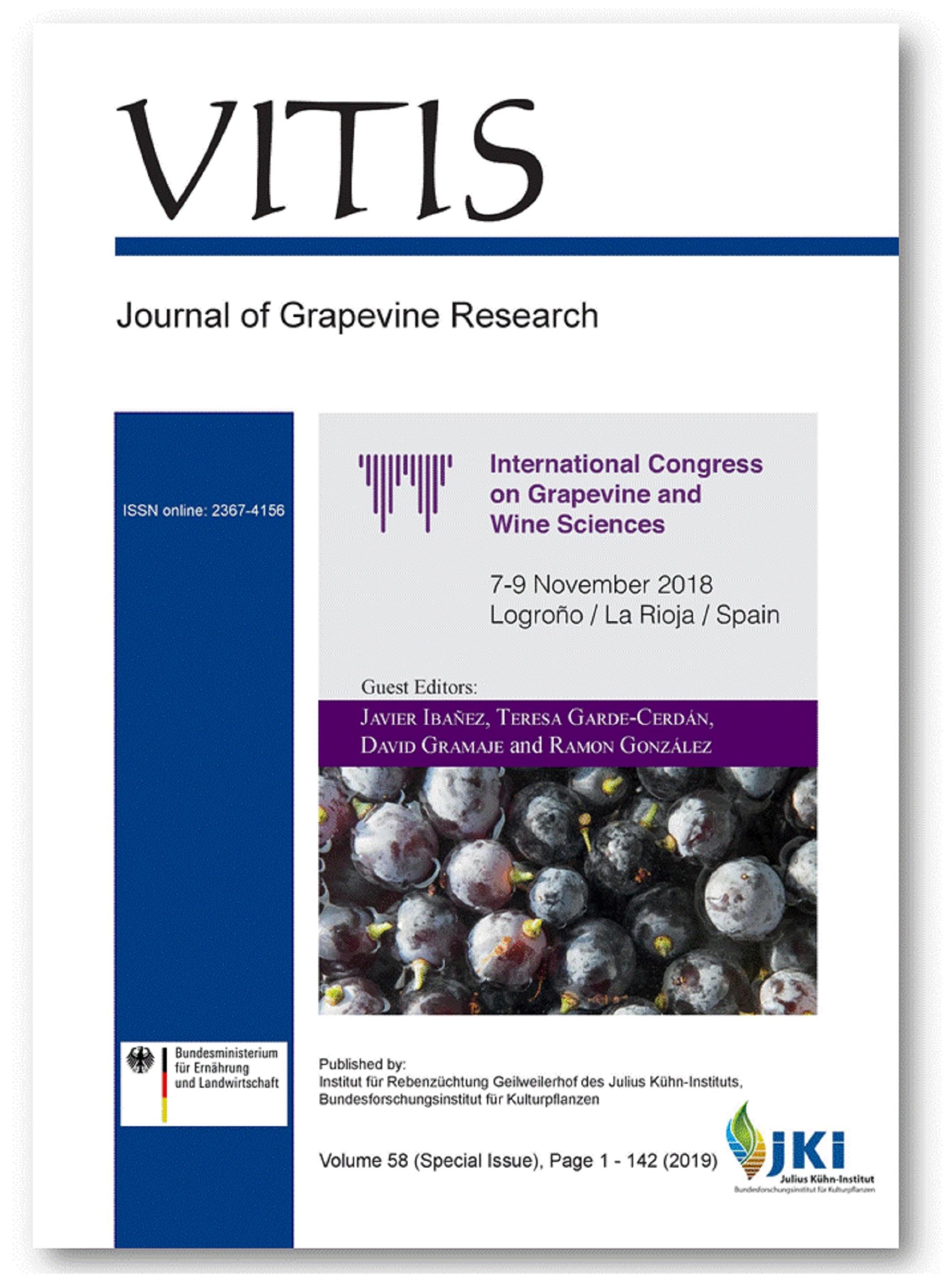Grapevine yield and wine quality in ancient Spanish Pyrenean vineyards: Influence of climatic and physiographic parameters
DOI:
https://doi.org/10.5073/vitis.2019.58.special-issue.103-110Keywords:
ancient vineyard; grapevine yield; wine quality; 'Garnacha Tinta'; sediment connectivity.Abstract
Climate, edaphic, and physiographic parameters influence wine quality. In this study, we evaluated if climate and sediment connectivity had an effect on the grapevine yield (GY) and wine quality of three ancient (more than 100 years old) vineyards, with 'Garnacha Tinta' variety, managed using the head-pruned system, and during three agronomic years (October 2015 - September 2018). The three rain-fed vineyards are managed using the head-pruned system and named VA (1233 vines), VB (1584 vines) and VS (897 vines). They are located in the Spanish Pyrenees, with oceanic Mediterranean climate, have the same soil type (Haplic Cambisol) and the soil is ploughed to prevent weeds. GY ranged from 380 to 2646 kg·ha–1, and from 0.08 to 0.60 kg·vine–1. The annual production significantly correlated with the total annual rainfall (positive), and with the air temperature during the growing period (negative). A frozen spell and intense rainfall events in spring explained the lower GY observed in 2017 and 2018, respectively. We observed a good correlation between GY (kg·ha-1) in 2018 and wine parameters such as, pH (r = 0.992), titratable acidity (r = -0.862), malic acid (r = 0.979), and potassium (r = 0.998). Annual runoff and sediment connectivity was estimated at each field (and its upslope drainage area) using the aggregated index of connectivity (AIC) at high spatial resolution (1 m of cell size). The lowest connectivity was found in VB, whereas VA and VS presented moderate and high values of connectivity, respectively. AIC correlated very well and negatively with GY (kg·ha-1, r = -0.955; and kg·vine-1, r = -0.972). Higher connectivity - intense overland flow dynamic - favoured lower yield. We concluded that the climate parameters mainly explained the temporal changes of GY, whereas distinct overland flow connectivity clearly influenced the spatial variations of GY under the same climatic conditions.
Downloads
Published
Issue
Section
License
The content of VITIS is published under a Creative Commons Attribution 4.0 license. Any user is free to share and adapt (remix, transform, build upon) the content as long as the original publication is attributed (authors, title, year, journal, issue, pages) and any changes to the original are clearly labeled. We do not prohibit or charge a fee for reuse of published content. The use of general descriptive names, trade names, trademarks, and so forth in any publication herein, even if not specifically indicated, does not imply that these names are not protected by the relevant laws and regulations. The submitting author agrees to these terms on behalf of all co-authors when submitting a manuscript. Please be aware that this license cannot be revoked. All authors retain the copyright on their work and are able to enter into separate, additional contractual arrangements.



